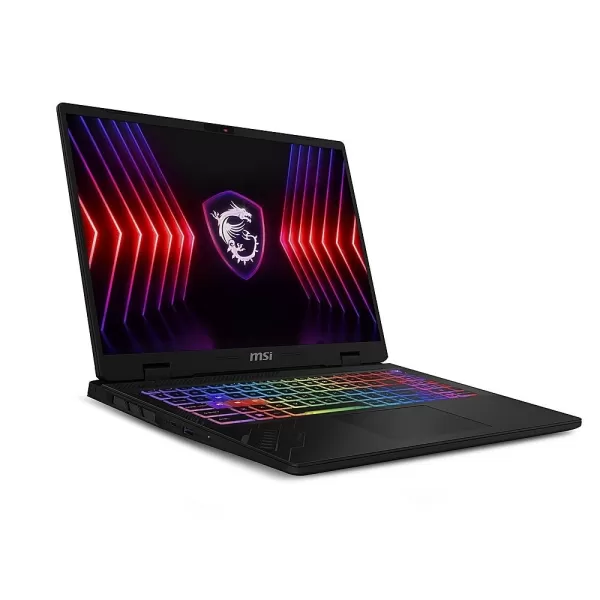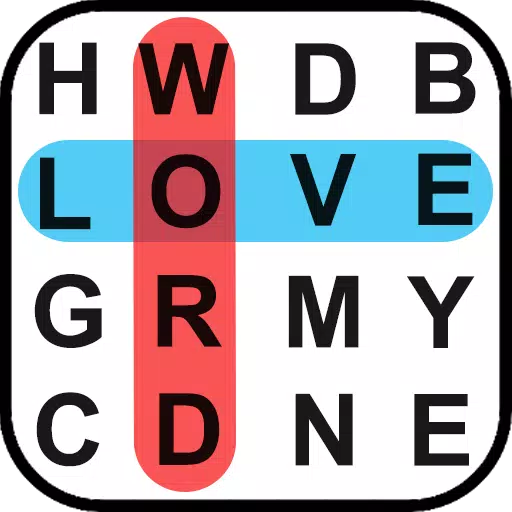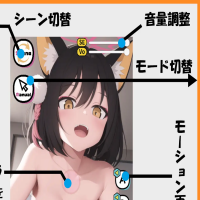The AMD Radeon RX 9070 enters the market at an intriguing time for graphics cards, following closely on the heels of Nvidia's latest generation. Priced at $549, it directly competes with the Nvidia GeForce RTX 5070, a card that has underperformed expectations. This competition is one that AMD is currently winning, positioning the Radeon RX 9070 as a top choice for 1440p gaming.
However, the situation is more nuanced than it appears at first glance, and AMD's pricing strategy plays a significant role. The Radeon RX 9070 is only $50 less than the superior Radeon RX 9070 XT. While the $50 price difference reflects an 8% performance gap and a 9% price reduction, it's challenging to justify not spending the extra amount for the enhanced performance of the 9070 XT. Nonetheless, when choosing between these two AMD options, the outlook remains favorable for Team Red.
Purchasing Guide
The AMD Radeon RX 9070 is set to launch on March 6, with a starting price of $549. Be aware that higher-priced models will likely be available. For the best value, I recommend opting for a model as close to the starting price as possible, given its close pricing to the Radeon RX 9070 XT.
AMD Radeon RX 9070 – Photos

 4 Images
4 Images
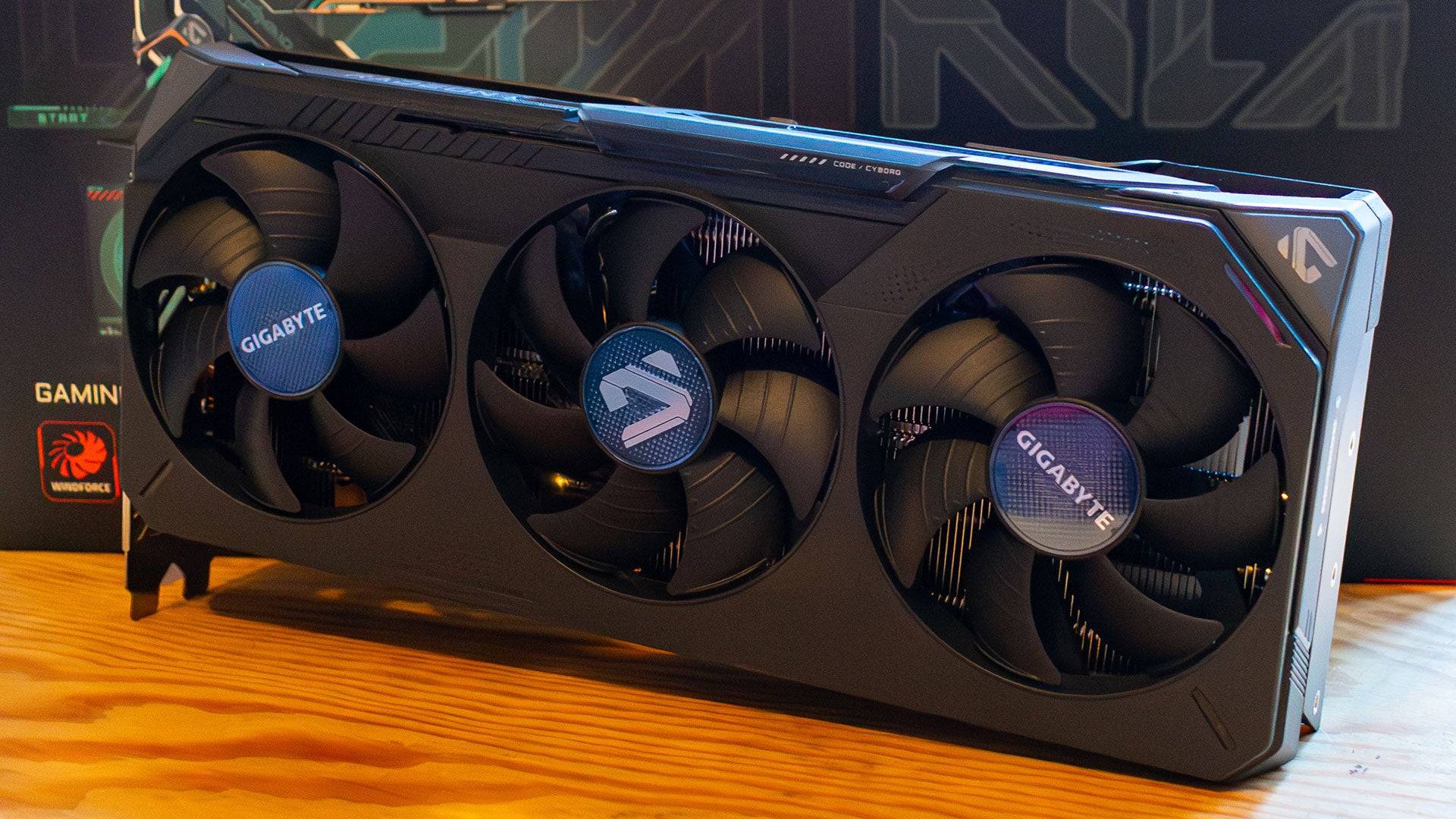
Specs and Features
Like its counterpart, the Radeon RX 9070 XT, the RX 9070 leverages the new RDNA 4 graphics architecture. This advancement significantly boosts performance, allowing the 9070 to surpass the Radeon RX 7900 GRE from the previous generation, despite having 30% fewer compute units.
The Radeon RX 9070 boasts 56 Compute Units, each equipped with 64 Streaming Multiprocessors (SMs), totaling 3,584 shaders. Each compute unit also includes one Ray Accelerator and two AI Accelerators, resulting in 56 and 112 total, respectively. These enhancements enable the card to excel in games with ray tracing, while the improved AI Accelerators introduce AMD's FidelityFX Super Resolution (FSR) 4, marking the first time AI upscaling is available on AMD graphics cards.
Similar to the 9070 XT, the RX 9070 comes with 16GB of GDDR6 VRAM on a 256-bit bus, matching the memory configuration of the 7900 GRE. This setup should suffice for 1440p gaming for years to come. Although adopting GDDR7, like Nvidia, would have been preferable, it likely would have increased the price.
AMD suggests a minimum 550W power supply for the RX 9070, which has a power budget of 220W. My testing showed peak consumption at 249W, slightly above the budget. While this doesn't necessitate better cooling, I recommend a 600W PSU for safety.
It's worth noting that AMD isn't releasing a reference design for the RX 9070, a departure from recent generations. All versions will be produced by third-party board manufacturers. I tested the Gigabyte Radeon RX 9070 Gaming OC 16G, a triple-slot card with a slight factory overclock.

FSR4
Since the rise of DLSS in 2018, AI upscaling has become a key method for enhancing performance without significantly compromising image quality. Previously exclusive to Nvidia, AI upscaling is now available on AMD GPUs with the introduction of FSR 4.
FSR 4 uses previous frames and in-game data, processed through an AI model, to upscale lower resolution images to your native resolution. This differs from the Temporal upscaling in FSR 3, which lacked an AI algorithm and could result in artifacts like ghosting.
However, FSR 4's AI model incurs a slight performance cost. For example, in Call of Duty: Black Ops 6 at 1440p on the Extreme preset, FSR 3 achieves 165 fps, while FSR 4 drops to 159 fps. Similarly, in Monster Hunter Wilds at 4K with ray tracing, the Radeon RX 9070 gets 81 fps with FSR 3, but 76 fps with FSR 4.
The Adrenalin software allows you to toggle between FSR 3 and FSR 4, letting you choose between better image quality or slightly better performance. As a fan of single-player games, I prefer FSR 4, but for fast-paced online games like Marvel Rivals, you might opt for FSR 3.
AMD Radeon RX 9070 XT & 9070 – Benchmarks
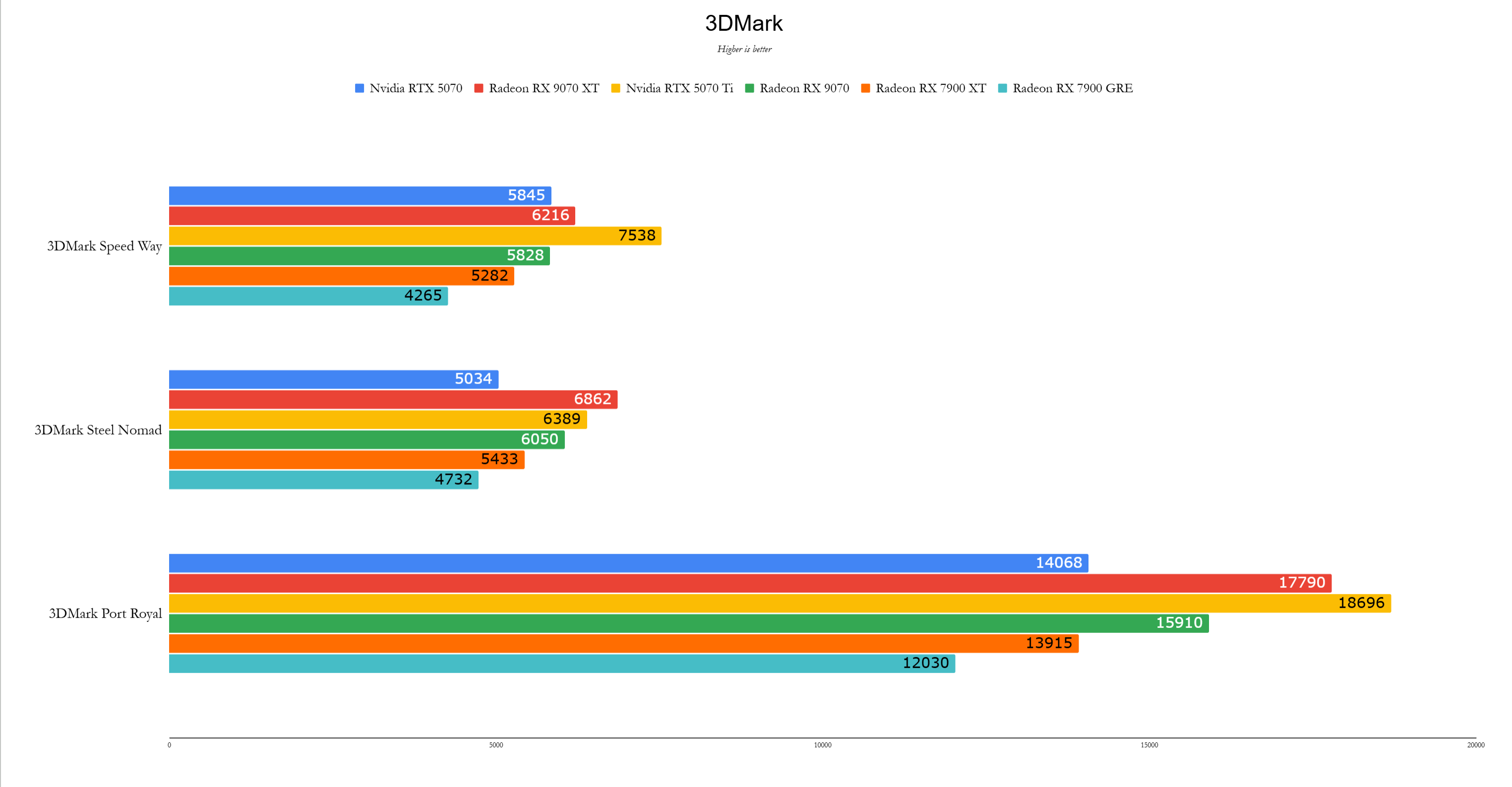
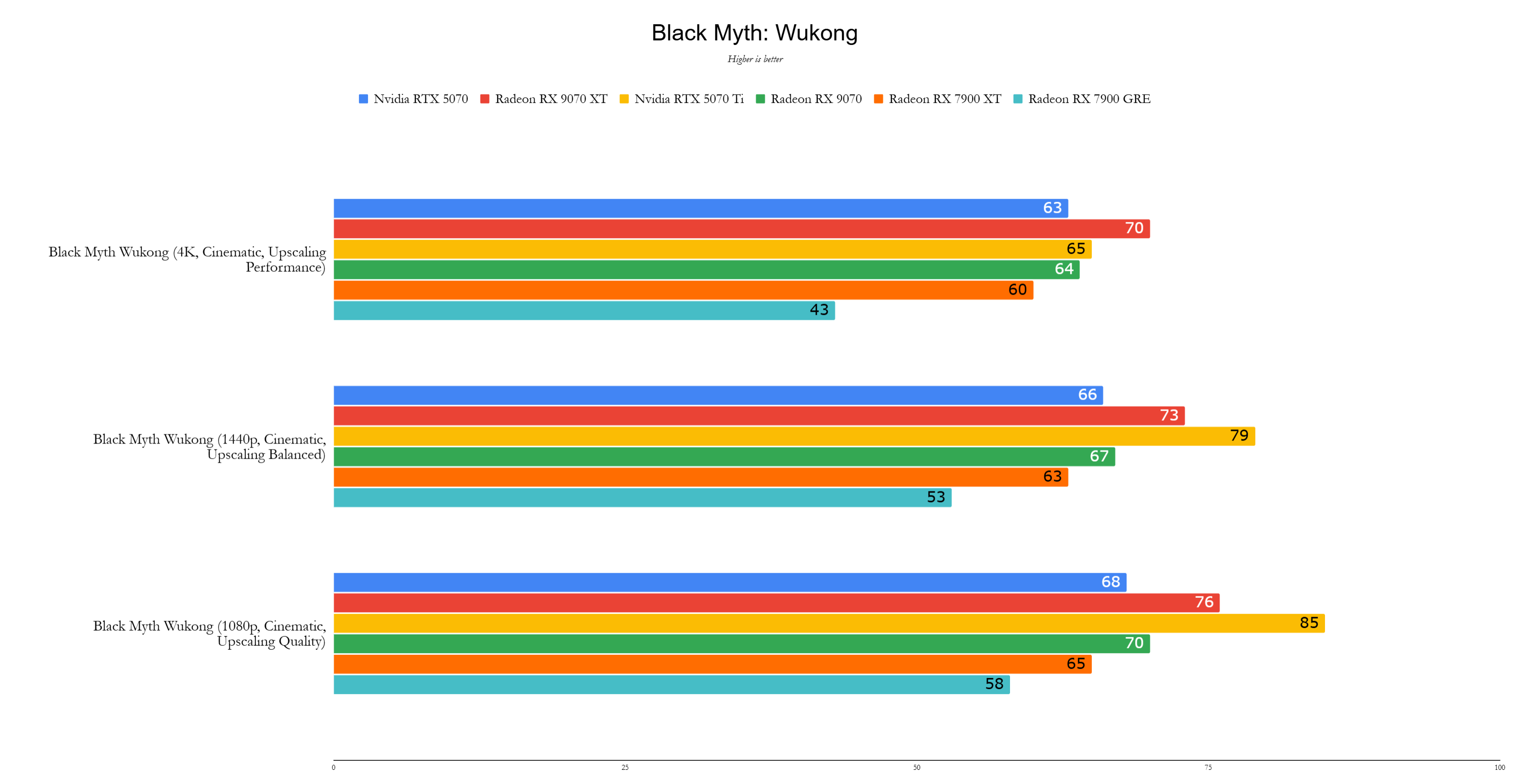 11 Images
11 Images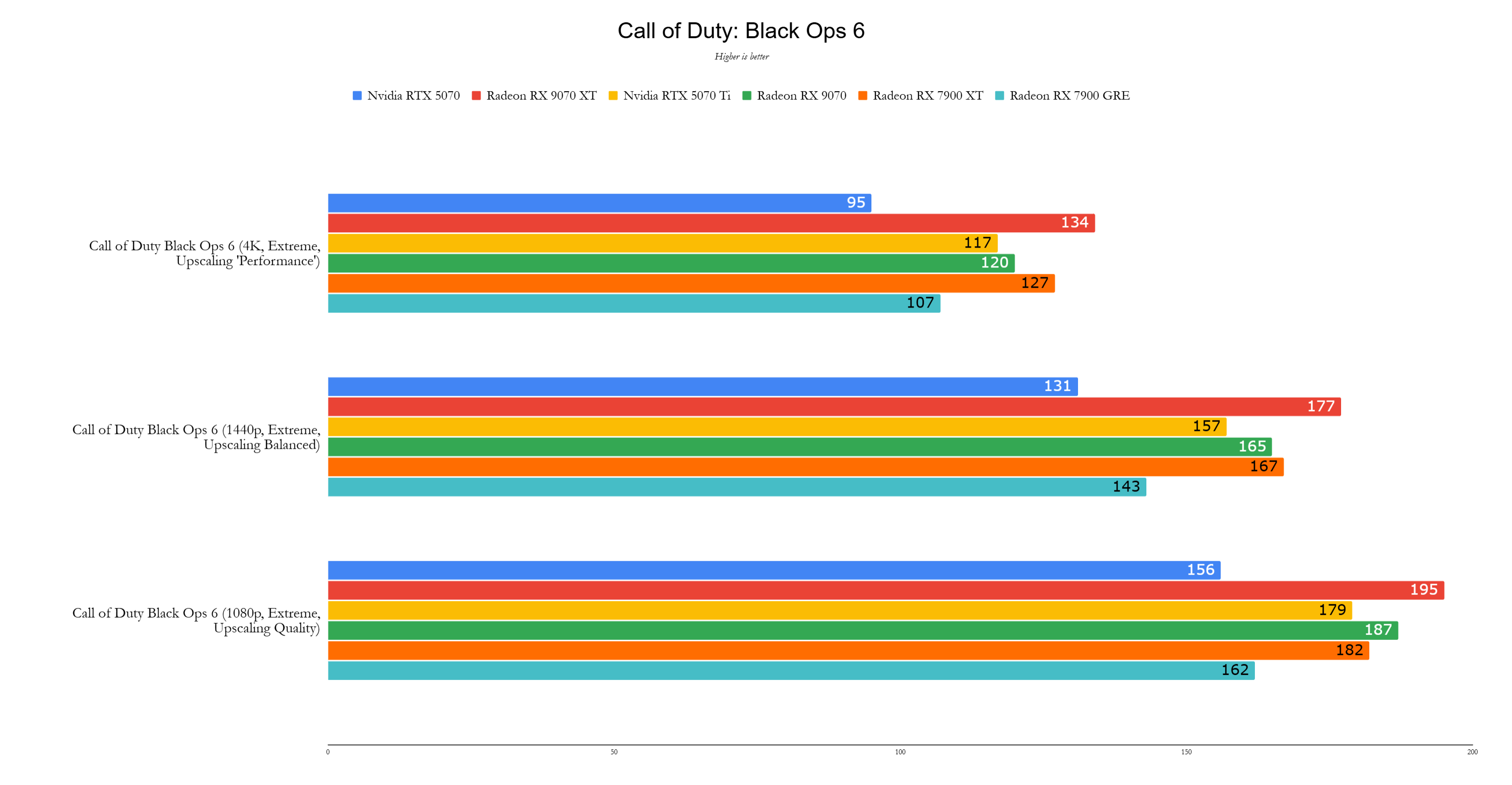
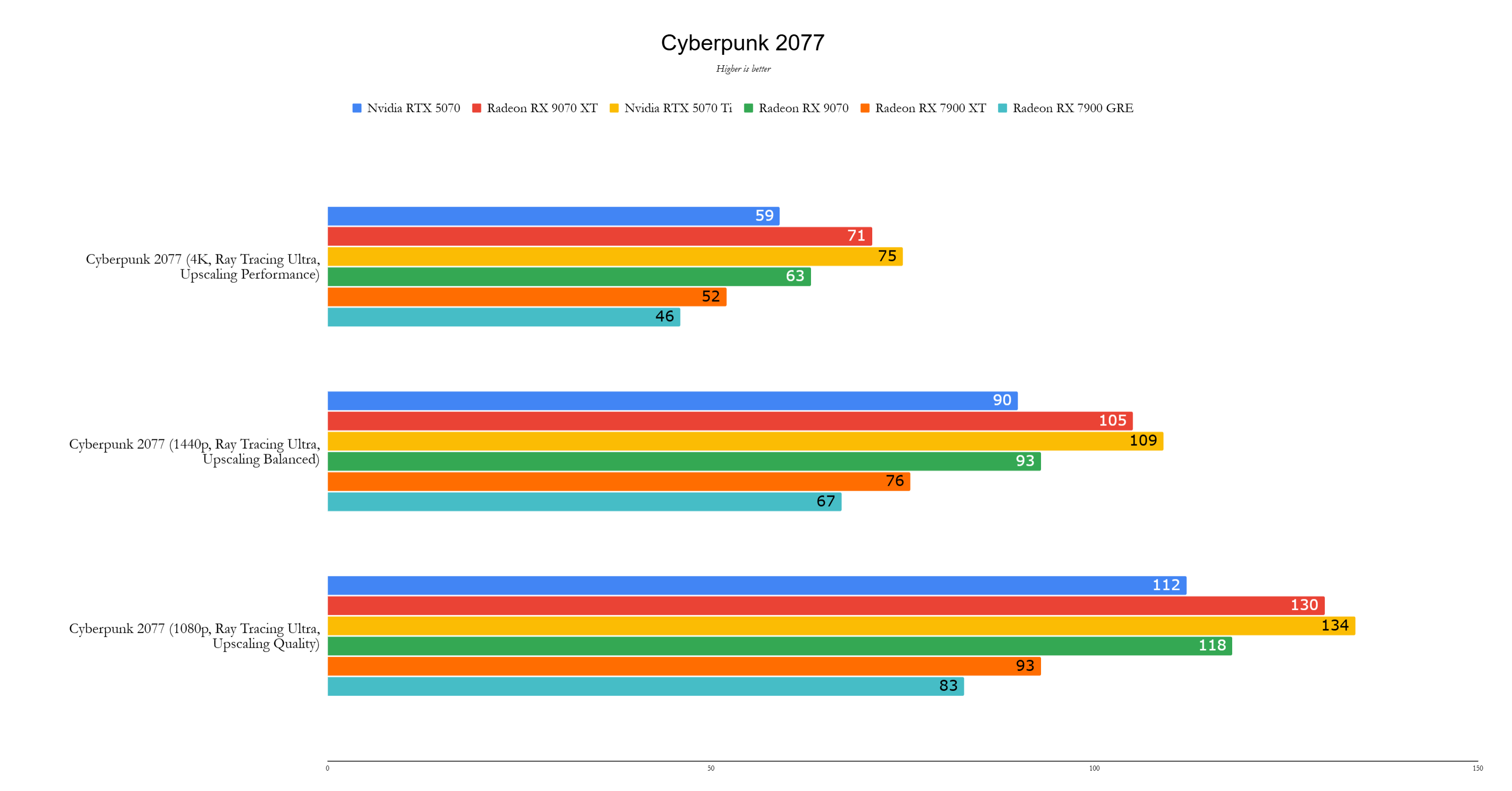
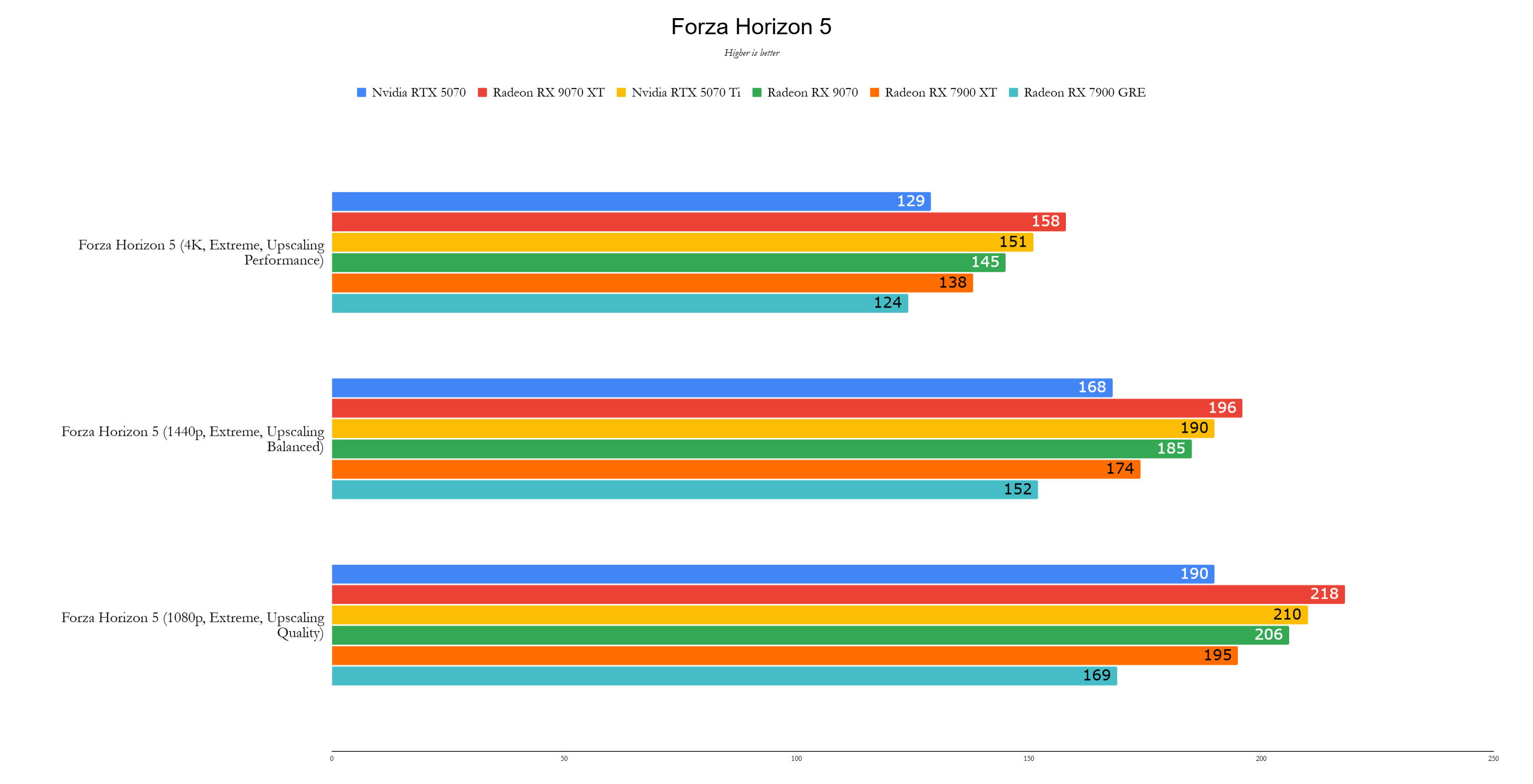
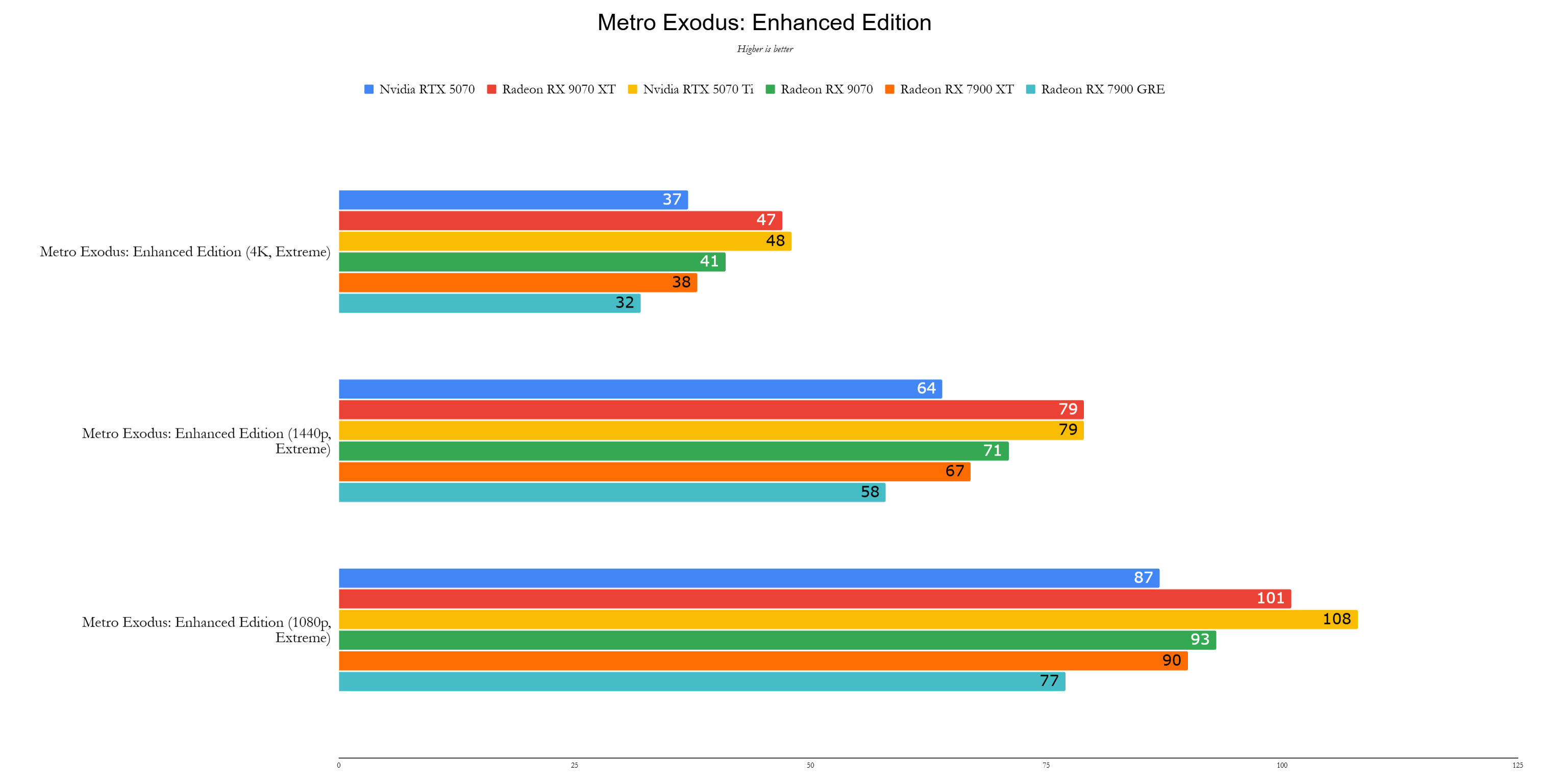
Performance
Priced at $549, the AMD Radeon RX 9070 outperforms the Nvidia GeForce RTX 5070 in most scenarios. At 1440p, it's on average 12% faster than the RTX 5070 and 22% faster than its predecessor, the RX 7900 GRE, which also launched at $549 in 2024. This is a notable leap forward, especially considering the 9070 has 30% fewer cores.
I tested a factory overclocked version of the RX 9070, the Gigabyte Radeon RX 9070 Gaming OC, which has a boost clock of 2,700Mhz, a 7% increase. This should boost performance by about 4-5%.
All tests were conducted using the latest public drivers at the time of writing: Nvidia cards on Game Ready driver 572.60, AMD cards on Adrenalin 24.12.1, and review drivers for the Radeon RX 9070, 9070 XT, and GeForce RTX 5070.
In 3DMark, the 9070 scores 5,828 points in the Speed Way test with ray tracing, nearly matching the RTX 5070's 5,845 points. In the Steel Nomad test without ray tracing, the 9070 significantly outperforms the RTX 5070, scoring 6,050 to 5,034 points, a 20% lead.
Test System
- CPU: AMD Ryzen 7 9800X3D
- Motherboard: Asus ROG Crosshair X870E Hero
- RAM: 32GB G.Skill Trident Z5 Neo @ 6,000MHz
- SSD: 4TB Samsung 990 Pro
- CPU Cooler: Asus ROG Ryujin III 360
In Call of Duty: Black Ops 6 at 1440p with FSR 3 set to Balanced, the 9070 achieves 165 fps, compared to 131 fps from the RTX 5070 and 143 fps from the 7900 GRE, a 26% and 15% lead, respectively.
Cyberpunk 2077, traditionally favoring Nvidia, sees the Radeon RX 9070 outperform the RTX 5070 by 3% at 1440p with the Ray Tracing Ultra preset, a significant achievement for AMD.
In Metro Exodus, tested without upscaling, the Radeon RX 9070 averages 71 fps, compared to 64 fps from the RTX 5070, an 11% lead.
Red Dead Redemption 2, using Vulkan, sees the RX 9070 achieve 142 fps at 1440p, compared to 115 fps from the RTX 5070, a 23% performance lead.
In Total War: Warhammer 3, the RX 9070 leads at 4K but is closely matched by the RTX 5070 at 1440p, with 135 fps to 134 fps.
Assassin's Creed Mirage sees the RX 9070 achieve 193 fps at 1440p with the Ultra preset and FSR set to Balanced, an 18% lead over the RTX 5070's 163 fps.
Black Myth Wukong, which typically favors Nvidia, results in a close contest, with the RX 9070 achieving 67 fps to the RTX 5070's 66 fps at 1440p.
Forza Horizon 5, despite its age, benefits from high frame rates, with the Radeon RX 9070 averaging 185 fps at 1440p, compared to 168 fps from the RTX 5070 and 152 fps from the RX 7900 GRE, a 12% and 25% difference, respectively.
The Radeon RX 9070's launch timing against the GeForce RTX 5070 is advantageous for AMD. Both cards are priced at $549, but the Radeon RX 9070 consistently outperforms the RTX 5070 in various tests. Moreover, with 16GB of VRAM, the RX 9070 is better equipped for future gaming demands, despite its slightly slower GDDR6 compared to the RTX 5070's GDDR7. Even if performance were equal, the RX 9070's larger VRAM capacity makes it a superior value, making it an easy choice for gamers seeking the best performance at this price point.





